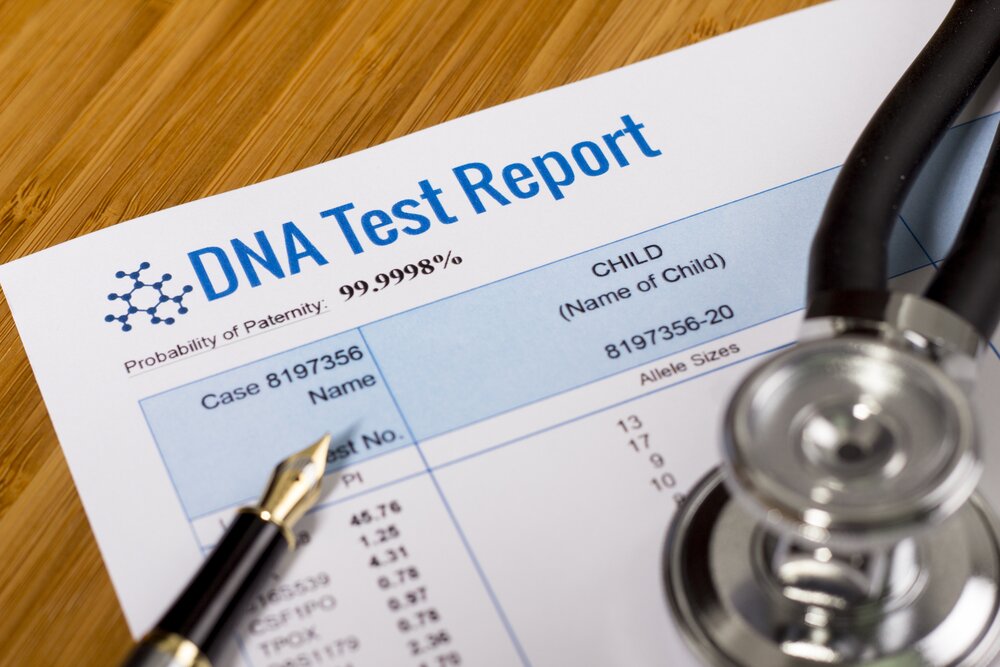DNA testing is a fantastic feat of scientific discovery. It has helped countless families around the globe to get much needed answers regarding their relatives and their parents. It can find the biological parents of an adopted person, it can help a mother to confirm the father of her baby, it can help a long lost relative find their biological family again.
There are many wonderful stories about families uniting because of DNA testing.
A common question that arises in regards to DNA testing is whether it can prove half sibling status. We aim to use this article to answer this for you, explaining first what a half sibling is, how a DNA test would work at finding out if you are half siblings, and whether it would be accurate.
If you have suspicions that there is a half sibling out there of yours, or whether there is a family member that you feel closer to (or not as close) as you should, and have ever considered DNA testing to prove your theories, then this article is for you! Keep on reading to find out more.

Half sibling… what is that, again?
To some people out there, this question might seem to have a glaringly obvious answer. However, it is not uncommon for people to get confused between half siblings and step siblings.
So before we progressed we really wanted to clear this up, because when it comes to DNA testing, there are huge differences between these two sibling statuses.
First, let’s deal with step siblings. Step siblings are not physically related. Step siblings occur as a result of two parents with their own children marrying each other. The children from each of the parents are now related as a result of the marriage. As an example, a man, let’s call him Jon may be a single father of one child, Katy.
He may meet a woman, let's call her Jess. Jess is a single mother of one child called Kirsty. Jess and Jon decide to get married. Kirsty and Katy will then become step siblings. Get it?
Now, half siblings are different. Half siblings share a parent. This means they either have the same mother or father. Here’s an example of this. Jan married and had a child with Mike. This child was called Sam. Jan and Mike divorced when Sam was 4 years old. Jan met another man soon after. His name was Ben. Jan and Ben married and then had a child together. This child was called Pete. Pete is now Sam’s sibling, as they share a mother. Jan is the mother to both Pete and Sam. Because they only share one parent they are half siblings. Get it?
Step siblings will not share DNA. Half siblings will share DNA because they are blood relatives. They will get DNA from the same mother or father.
In the case of Sam and Pete, they will both have DNA from their mother, therefore, a DNA test would prove their half-sibling status. Now, remember Katy and Kirsty? Those step sisters we discussed earlier? If they did a DNA test to prove they were related, it is very unlikely that they would share any DNA because as far as we know, they are only related by marriage.
We say ‘as far as we know’ because there have, of course, been situations where DNA testing has shown very unexpected results in families. People who thought they were related turned out not to be, and vice versa. People have secrets, families have secrets, it’s not uncommon for DNA test results to uncover these secrets. However, that’s a story for another article!
Now that we know exactly what a half sibling is, it is time to think about DNA testing, and if it can prove half sibling status, how it does it, and how accurate it is.
How does a DNA test get taken?
To test half sibling status for two individual people like Sam and Pete, a DNA sample would be taken from each of them. This sounds like it could be super invasive, we know. However, this can usually be taken via a buccal sample. This is a sample of cells from the inside of your cheek. A swab is rubbed on the inside of the cheek to gain as many of the cells as possible.
It is then bagged up and sent off for testing. Generally, an autosomal DNA test is undertaken to find matches of your DNA which may indicate that someone is a relative of yours. It can find siblings, half siblings, cousins, aunts, and uncles.
There are other ways to get a DNA test, for example when someone is pregnant, you can test for paternity by taking blood from the mother. However, this would not be relative to help find your half sibling or test half sibling status between two people.

So, Can DNA Testing Prove Half Siblings?
Sam and Pete, the half siblings from our example just then are biologically related. If they were to each do a DNA test it is highly likely that they would show up as half siblings due to the shared DNA they will have from their mother Jan.
This means that, theoretically, DNA testing can prove half siblings in the same way as it would prove a full sibling (siblings that share the same mother and father). Out of all the ways you may try to find out if someone is your half-sibling, DNA testing is likely to be the most reliable and most accurate method.
That being said, it is not 100% accurate. DNA is a very unique thing, and even for full siblings, the makeup of each of their DNA can be very different. Keep on reading to the next section to find out more about this.
How accurate is DNA testing for half siblings?
So we know that DNA testing may, in theory, be able to prove half sibling status. However, this is not 100% accurate. To answer this properly, we need to sit back for a tiny little science lesson. DNA is completely unique to each and every person on the planet. No two people have the same DNA. The exception to this is identical twins. They share the same DNA coding.
With this aside, siblings will never have the exact same DNA. Likewise, our DNA will never be identical to either of our parents’. However, you can share DNA with another person. You can even share DNA with someone who is not actually related to you in small amounts. On the other hand, a distant relative may not share any DNA with you at all!
Confused yet? Don’t worry, it gets better! The reason we mentioned the sharing of DNA is because the people you are most likely to share the most DNA with are your biological relatives. This means your mother, father, and any siblings you have, whether half or full. The way they find out who these relations are is by seeing with whom you share the most DNA. You will share far more DNA with a half-sibling than you would a non-relative!
The reason DNA testing organizations cannot guarantee 100% accuracy is because the DNA will never be an identical match (unless of course, you have an identical twin), and also because you may share the same amount of DNA with a half-sibling as you would a cousin. There have been many instances where cousins have been labeled as half siblings, and half siblings labeled as cousins.
Some of these instances have led families to uncover secrets, others have been genuine mistakes that have been proved otherwise because of age differences.
What we can safely say is that a DNA test will certainly show potential for a biological relationship between two people. Whilst this cannot determine what exactly that relationship is because of the similarities between cousins and half siblings in terms of DNA, just knowing that there is a biological match there may well be enough for some people.
DNA testing can work alongside thorough research to help give proof that someone is your half sibling. Whilst you may never achieve 100% accuracy, the test will be the next best thing, and certainly, the closest thing to a time machine you will get.
Final Word
To conclude our exploration of whether DNA testing can prove half sibling status, we want to clarify once again that a half sibling is someone who shares one parent with you. This may be a mother, meaning you were both created in the same womb, or a father, meaning you both were created from the sperm cells of the same person.
Step siblings are related only by marriage, and so they will share no biological relation. DNA testing can be used to prove a relation, but it will not give you 100% accuracy in finding your half sibling. In fact, it may well show your cousin as your half sibling and vice versa due to the amount of DNA shared between these relations being similar.
We hope that this article has proved very helpful in giving you more information about what makes you a half sibling, how a DNA test works for finding half siblings, and how accurate it may be. We wish you all the best.
